
Kanyakumari: The Southern Tip of India
Discover Kanyakumari, where three seas meet. Enjoy stunning sunsets, historical landmarks, and vibrant local culture at India’s southernmost tip.
Kanyakumari, also known as Cape Comorin, is a town located at the southernmost tip of the Indian subcontinent. This coastal gem is where the Indian Ocean, Arabian Sea, and Bay of Bengal converge. Known for its stunning sunrises and sunsets, Kanyakumari offers a unique blend of natural beauty, cultural heritage, and spiritual significance. The town is home to the iconic Vivekananda Rock Memorial, built on a small island just off the coast. This monument commemorates Swami Vivekananda's meditation in 1892 and is a serene place to visit. Close by, the Thiruvalluvar Statue stands tall as a tribute to the famous Tamil poet and philosopher. Both landmarks are accessible by a short ferry ride and offer panoramic views of the surrounding waters. Kanyakumari is also rich in history and culture. The Kumari Amman Temple, dedicated to the virgin goddess Kanya Devi, is a must-visit for its spiritual ambiance and architectural beauty. The Gandhi Memorial, built to honor Mahatma Gandhi, is another significant site where his ashes were kept before being immersed in the sea. The town's vibrant markets offer an array of local handicrafts, seashell souvenirs, and delicious South Indian cuisine. Nature enthusiasts will find Kanyakumari's beaches, waterfalls, and hills inviting. The nearby Vattakottai Fort provides a glimpse into the region's colonial past and offers a picturesque view of the sea. Whether you are looking to relax by the shore, explore historical sites, or immerse yourself in local culture, Kanyakumari promises a memorable experience.
Local tips in Kanyakumari
- Visit the Vivekananda Rock Memorial early in the morning to avoid the crowds and catch the sunrise.
- Carry a hat and sunscreen as the coastal sun can be quite strong.
- Try local delicacies like banana chips and seafood at nearby stalls and restaurants.
- Wear comfortable shoes if you plan to explore the fort and surrounding areas.
- Check the ferry schedule in advance, especially during peak tourist seasons.
- Respect local customs when visiting temples and other religious sites.
Kanyakumari: The Southern Tip of India
Kanyakumari, also known as Cape Comorin, is a town located at the southernmost tip of the Indian subcontinent. This coastal gem is where the Indian Ocean, Arabian Sea, and Bay of Bengal converge. Known for its stunning sunrises and sunsets, Kanyakumari offers a unique blend of natural beauty, cultural heritage, and spiritual significance. The town is home to the iconic Vivekananda Rock Memorial, built on a small island just off the coast. This monument commemorates Swami Vivekananda's meditation in 1892 and is a serene place to visit. Close by, the Thiruvalluvar Statue stands tall as a tribute to the famous Tamil poet and philosopher. Both landmarks are accessible by a short ferry ride and offer panoramic views of the surrounding waters. Kanyakumari is also rich in history and culture. The Kumari Amman Temple, dedicated to the virgin goddess Kanya Devi, is a must-visit for its spiritual ambiance and architectural beauty. The Gandhi Memorial, built to honor Mahatma Gandhi, is another significant site where his ashes were kept before being immersed in the sea. The town's vibrant markets offer an array of local handicrafts, seashell souvenirs, and delicious South Indian cuisine. Nature enthusiasts will find Kanyakumari's beaches, waterfalls, and hills inviting. The nearby Vattakottai Fort provides a glimpse into the region's colonial past and offers a picturesque view of the sea. Whether you are looking to relax by the shore, explore historical sites, or immerse yourself in local culture, Kanyakumari promises a memorable experience.
When is the best time to go to Kanyakumari?
Iconic landmarks you can’t miss
Vivekananda Rock Memorial
Experience the spiritual essence of India at Vivekananda Rock Memorial, a stunning monument embodying heritage and tranquility in Kanniyakumari.

Kanyakumari Sunrise View
Experience the breathtaking beauty of Kanyakumari Sunrise View, where dawn paints the sky with vibrant colors at India's southernmost tip.

Sunset Point, Kanyakumari
Experience the enchanting beauty of Sunset Point in Kanyakumari, where the sun paints the sky in vibrant colors, creating magical moments.

Kanyakumari Beach
Discover the enchanting Kanyakumari Beach, where stunning sunrises meet spiritual serenity at India's southernmost tip.

Sunrise Point
Experience the breathtaking sunrise at Sunrise Point, where the oceans meet and nature unveils its stunning beauty in Kanniyakumari, Tamil Nadu.
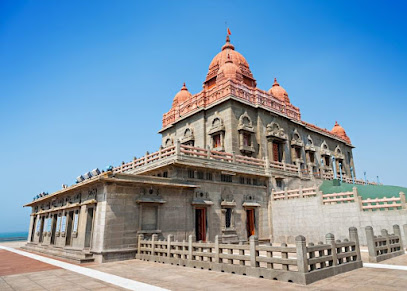
Mayapuri Wonder Wax
Experience lifelike wax figures of celebrities and historical icons at Mayapuri Wonder Wax Museum, a must-visit tourist attraction in Kanniyakumari.

KanniyaKumari Amman Temple
Explore KanniyaKumari Amman Temple, a vibrant Hindu temple at the tip of India, blending spirituality, history, and stunning coastal views.

View Tower | Kanyakumari
Discover breathtaking views at the View Tower in Kanyakumari, where the seas meet and nature's beauty unfolds.

Triveni Sangamam
Discover Triveni Sangamam, where the seas meet in a dance of tranquility, beauty, and spirituality at the southern tip of India.

Thiruvalluvar Statue
Discover the Thiruvalluvar Statue, a monumental tribute to wisdom and culture at the scenic southern tip of India, amidst breathtaking sea views.
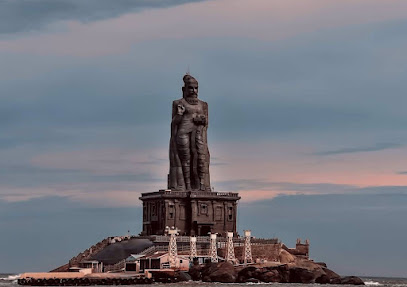
Kanyakumari Pier
Discover the breathtaking beauty of Kanyakumari Pier, where three oceans meet, offering stunning views, rich culture, and unforgettable experiences.

Sunset View Point
Experience the mesmerizing sunsets at Sunset View Point, Kanniyakumari—where ocean meets sky in a stunning display of colors.

Mahatma Gandhi Mandapam
Discover the serene Mahatma Gandhi Mandapam in Kanyakumari, a memorial that embodies peace, unity, and stunning ocean views.

Kanniyakumari Shri Tirupathi Temple
Experience spiritual tranquility and architectural beauty at the Shri Tirupathi Temple in Kanniyakumari, a must-visit destination for all travelers.

Our Lady of Ransom Shrine
Discover the spiritual beauty and architectural wonder of Our Lady of Ransom Shrine in Kanyakumari, a must-visit for every traveler.
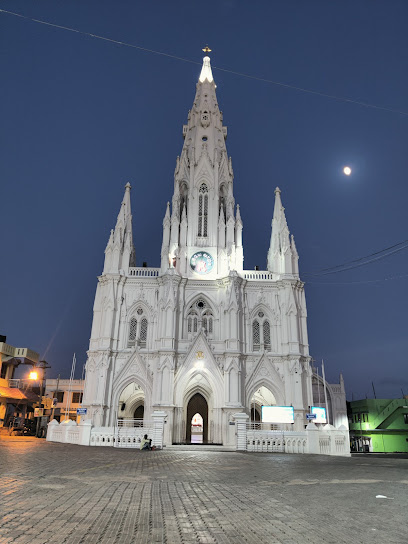
Unmissable attractions to see
Vivekananda Rock Memorial
Discover the spiritual and architectural marvel of Vivekananda Rock Memorial in Kanniyakumari, where land meets the sea in perfect harmony.

Kanyakumari Sunrise View
Experience the breathtaking beauty of Kanyakumari's sunrise, where land meets sea, and moments become memories.

Padmanabhapuram Palace
Discover Padmanabhapuram Palace, a historical gem in Tamil Nadu that showcases exquisite architecture and rich cultural heritage, perfect for every traveler.

Sunset Point, Kanyakumari
Witness the breathtaking sunset at Kanyakumari's iconic Sunset Point, where vibrant hues paint the sky and create unforgettable memories.

Suchindram Shree Thanumalayan Swamy Temple
Discover the serene beauty and spiritual essence of Suchindram Shree Thanumalayan Swamy Temple, a masterpiece of Dravidian architecture.

Vattakottai Fort
Discover Vattakottai Fort in Tamil Nadu, a historical gem with stunning coastal views and a rich heritage waiting to be explored.

Kanyakumari Beach
Discover the enchanting Kanyakumari Beach where three seas meet, offering stunning sunsets, rich culture, and unforgettable experiences in Tamil Nadu.

Sri Kanniyakumari Amman Temple
Discover the spiritual beauty of Sri Kanniyakumari Amman Temple, a stunning Hindu temple where the sea meets devotion in Tamil Nadu.

Mayapuri Wonder Wax
Explore the fascinating world of lifelike wax figures at Mayapuri Wonder Wax Museum in Kanniyakumari, where art meets culture in an unforgettable experience.

View Tower | Kanyakumari
Experience breathtaking views at Kanyakumari's View Tower, where the Arabian Sea, Indian Ocean, and Bay of Bengal converge in stunning harmony.

Triveni Sangamam
Explore the stunning confluence of three seas at Triveni Sangamam, Kanniyakumari – a serene blend of nature and spirituality awaits.

Sunset View Point
Experience the mesmerizing beauty of sunsets at Sunset View Point in Kanniyakumari, a must-visit destination for all travelers.

Kanniyakumari Shri Tirupathi Temple
Explore the spiritual heart of Tamil Nadu at the Kanniyakumari Shri Tirupathi Temple, a stunning blend of devotion, architecture, and coastal beauty.

Our Lady of Ransom Shrine
Discover the serene beauty and rich history of Our Lady of Ransom Shrine, a captivating Catholic church in Kanyakumari, Tamil Nadu.

Eco park
Explore the lush landscapes and serene ambiance of Eco Park in Kanniyakumari, a perfect escape for nature lovers and families.

Essential places to dine
Hotel Saravana
Discover delicious vegetarian cuisine at Hotel Saravana in Kanniyakumari - where every dish tells a story of flavor and tradition.

Hotel Sangam
Discover comfort and delicious Asian cuisine at Hotel Sangam in beautiful Kanniyakumari, your perfect getaway on India's southern coast.

Zam Zam Restaurant
Discover the rich flavors of Indian and Arab cuisine at Zam Zam Restaurant in Kanyakumari – a must-visit culinary destination.

The Curry
Experience authentic Indian flavors at The Curry in Kanyakumari – where every dish tells a story of tradition.

Sree Aditti Bhavan
Experience authentic South Indian cuisine at Sree Aditti Bhavan in Kanyakumari – where tradition meets taste.

Sahana Multi Cuisine Restaurant
Discover authentic Chettinad flavors at Sahana Multi Cuisine Restaurant in Kanniyakumari – where tradition meets taste.

The Ocean Restaurant
Experience exquisite seafood dining with breathtaking ocean views at The Ocean Restaurant in Kanniyakumari.

Shree Punjabi Dhabba (pure vegetarian)
Savor authentic North Indian vegetarian delights at Shree Punjabi Dhabba in Kanniyakumari – where every dish tells a story.

Suchindrum Maruthi Hotel
Experience authentic South Indian vegetarian cuisine at Suchindrum Maruthi Hotel in Kanniyakumari - where tradition meets flavor.

Hotel Afsal
Experience authentic Chettinad cuisine at Hotel Afsal in Kanniyakumari—where rich flavors meet warm hospitality.

Hotel Triveni
Discover Hotel Triveni: A cozy vegetarian haven in Kanniyakumari offering delightful breakfast options amidst serene surroundings.

Darbar Multi Cuisine Restaurant
Savor authentic Indian flavors at Darbar Multi Cuisine Restaurant in Kanyakumari – a culinary experience that captures the essence of India's diverse cuisine.

Hotel Viswa
Discover the flavors of South India at Hotel Viswa in Kanniyakumari – a culinary gem serving authentic dishes with warm hospitality.

Famous Fresh Fish Fry.
Discover authentic coastal flavors at Famous Fresh Fish Fry in Kanniyakumari - where fresh seafood meets traditional Tamil Nadu cuisine.
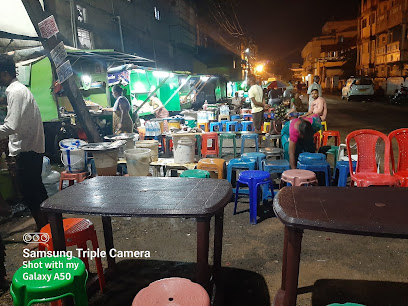
Capeista Restaurant
Experience authentic cuisine at Capeista Restaurant in Kanyakumari, where every dish tells a story of local flavors amidst stunning coastal views.

Markets, malls and hidden boutiques
Gmart
Discover the vibrant flavors of Tamil Nadu at Gmart, your go-to grocery store in Kanniyakumari, offering fresh produce and local delicacies.

Ramraj Cotton - Kanyakumari
Discover the rich tradition of Indian textiles at Ramraj Cotton in Kanyakumari, a shopping paradise for quality cotton clothing and souvenirs.

JPM Seashell Kanyakumari
Explore the vibrant offerings of JPM Seashell Kanyakumari, where local culture meets unique shopping experiences along the scenic Beach Road.

Tamilnadu Shopping Center
Explore the cultural richness of Tamil Nadu at Tamilnadu Shopping Center, your go-to destination for authentic local crafts and everyday needs.

Sangi Mangi Menswear
Explore Sangi Mangi Menswear in Kanniyakumari: Where style meets tradition in the heart of Tamil Nadu's fashion scene.
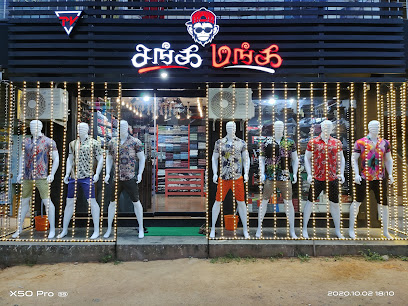
Kamal Stores
Explore the heart of Kanniyakumari at Kamal Stores – your one-stop shop for local snacks, essentials, and souvenirs.

Mahalakshmi Novelties
Explore Mahalakshmi Novelties in Kanniyakumari for unique gifts and stylish bags that reflect the rich culture of Tamil Nadu.
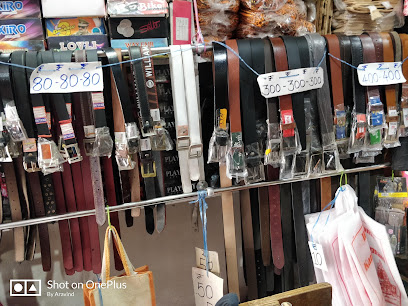
Samiulla Keychain Center
Explore Samiulla Keychain Center for unique handcrafted souvenirs that capture the vibrant spirit of Kanniyakumari’s culture.

Co-optex Kanyakumari
Explore the vibrant world of textiles at Co-optex Kanyakumari, where tradition meets craftsmanship in every thread.

Nisha Stores
Explore Nisha Stores in Kanniyakumari for unique local goods, traditional handicrafts, and an authentic shopping experience reflecting Tamil Nadu's rich culture.

Cool Fashion Tex , Opp Railway Station , Kanya Kumari
Explore the essence of Indian fashion at Cool Fashion Tex, a boutique in Kanya Kumari offering unique styles and local craftsmanship.

Kanyakumari shopping street
Explore Kanyakumari Shopping Street for unique handicrafts, local delicacies, and a lively taste of Tamil Nadu's culture.

Garments
Explore Garments in Kanniyakumari for an authentic shopping experience, offering a mix of traditional and contemporary clothing styles.

Murugan Stores
Discover local flavors and essential goods at Murugan Stores, a charming grocery store in Kanniyakumari, Tamil Nadu.

Khaleel Store
Explore Khaleel Store in Kanniyakumari – your one-stop destination for local treasures and unique souvenirs in Tamil Nadu.

Essential bars & hidden hideouts
Zam Zam Restaurant
Savor the best of Indian and Arab flavors at Zam Zam Restaurant in Kanyakumari, where every meal is a celebration of taste.
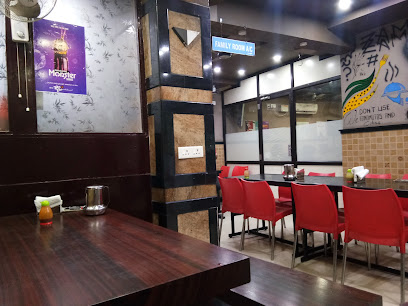
Hotel Melody Park
Experience the charm of Kanniyakumari at Hotel Melody Park, where comfort meets local culture in a vibrant setting.
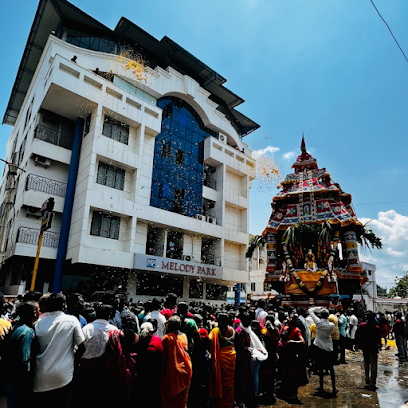
Wine & Dine
Discover a coastal culinary gem in Kanniyakumari at Wine & Dine, where stunning views meet exceptional flavors and refreshing cocktails.
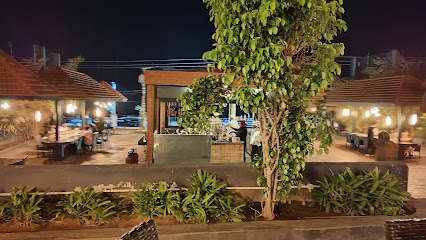
Kannan Coffee Bar
Discover the cozy charm of Kannan Coffee Bar in Kanniyakumari, where every sip of coffee and tea is a delightful experience.

Lassi Kingdom
Discover the refreshing tastes at Lassi Kingdom in Kanniyakumari, where delightful lassis and juices await to quench your thirst!

Bar
Experience the vibrant nightlife of Kanniyakumari at its premier bar, offering stunning coastal views and a diverse drink selection.
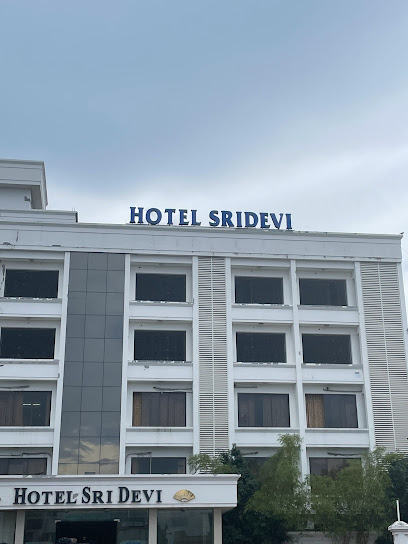
THE ROYAL CASINO CLUB
Discover The Royal Casino Club: A sophisticated bar in Kanniyakumari offering vibrant nightlife, exquisite drinks, and unforgettable entertainment.

Hotel sun
Experience the flavors of Tamil Nadu at Hotel Sun, a charming restaurant in the heart of Kanniyakumari, perfect for food lovers.

Sangam Bar
Experience the vibrant nightlife at Sangam Bar in Kanniyakumari, where every sip tells a story and every moment is memorable.

Resto Bar
Experience authentic Tamil Nadu flavors at Resto Bar in Kanniyakumari, where local dishes and refreshing drinks await in a vibrant atmosphere.

Redsun Bar
Experience the vibrant nightlife at Redsun Bar in Kanniyakumari, where refreshing drinks and a friendly atmosphere await every tourist.

Lip Sip ️
Discover Lip Sip, a family-friendly dining gem in Kanniyakumari offering authentic local flavors in a welcoming atmosphere.

Baywatch restaurant
Experience the flavors of Kanniyakumari at Baywatch Restaurant, where delicious seafood meets stunning ocean views in a welcoming atmosphere.

Queen Starters
Experience a taste of South India at Queen Starters, the perfect dining destination in Kanniyakumari for authentic flavors and warm hospitality.

Juice bar
Discover a refreshing oasis at Kanniyakumari's juice bar, where health meets flavor in a vibrant beachside setting.

Local Phrases
-
- Helloவணக்கம்
[vaṇakkam] - Goodbyeபுனிதம்
[puṉitam] - Yesஆம்
[ām] - Noஇல்லை
[illai] - Please/You're welcomeதயவு செய்து
[tayavu ceytu] - Thank youநன்றி
[naṉṟi] - Excuse me/Sorryமன்னிக்கவும்
[maṉṉikkavum] - How are you?எப்படி இருக்கிறீர்கள்?
[eppaṭi irukkiṟīrkaḷ?] - Fine. And you?நன்றாகக் கொண்டிருக்கிறேன். நீங்கள்?
[naṉṟākak koṇṭirukkiṟēṉ. nīṅkaḷ?] - Do you speak English?ஆங்கிலம் பேசுகிறீர்களா?
[āṅkilam pēsukiṟīrkaḷā?] - I don't understandபுரியவில்லை
[puriyavillai]
- Helloவணக்கம்
-
- I'd like to see the menu, pleaseஉணவடிக்க விரும்புகிறேன்
[uṇavaṭikka virumpukiṟēṉ] - I don't eat meatநான் மாம்சம் உண்ணவில்லை
[nāṉ māmacam uṇṇavillai] - Cheers!கண்ணீர்!
[kaṇṇīr] - I would like to pay, pleaseசம்பளத்தை செலுத்த விரும்புகிறேன்
[sampalaṭṭai celutta virumpukiṟēṉ]
- I'd like to see the menu, pleaseஉணவடிக்க விரும்புகிறேன்
-
- Help!உதவி!
[utavi] - Go away!பிரியாதே!
[piriyātē] - Call the Police!காவல் அலுவலகத்தை அழைக்கவும்!
[kāval aluvalakattai aḻaikka vum] - Call a doctor!மருத்துவரை அழைக்கவும்!
[maruttuvarai aḻaikka vum] - I'm lostநான் தப்பினேன்
[nāṉ tappinēṉ] - I'm illஎனக்கு நோய் உள்ளது
[eṉakku nōy uḷḷatu]
- Help!உதவி!
-
- I'd like to buy...வாங்க விரும்புகிறேன்...
[vāṅka virumpukiṟēṉ...] - I'm just lookingநான் பார்க்கிறேன்
[nāṉ pārkiṟēṉ] - How much is it?எவ்வளவு?
[evvaḷavu?] - That's too expensiveஅது பல செல்லும்
[atu pala cellum] - Can you lower the price?விலையை குறையலாமா?
[vilaiyai kuṟaiyālāmā?]
- I'd like to buy...வாங்க விரும்புகிறேன்...
-
- What time is it?எந்த நேரம்?
[endha nēram] - It's one o'clockஒரு மணி
[oru maṇi] - Half past (10)பத்துக்கு அரை
[pattukku arai] - Morningகாலை
[kālai] - Afternoonமதியம்
[madiyam] - Eveningமாலை
[mālai] - Yesterdayநேற்று
[nēṟṟu] - Todayஇன்று
[iṉṟu] - Tomorrowநாளை
[nāḷai] - 1ஒன்று
[oṉṟu] - 2இரண்டு
[iraṇḍu] - 3மூன்று
[mūṉṟu] - 4நான்கு
[nāṉku] - 5ஐந்து
[aindu] - 6ஆறு
[āṟu] - 7ஏழு
[ēḻu] - 8எட்டு
[eṭṭu] - 9ஒன்பது
[onpatu] - 10பத்து
[pattu]
- What time is it?எந்த நேரம்?
-
- Where's a/the...?எங்கே ஒரு / ... உள்ளது?
[eṅkē oru / ... uḷḷatu?] - What's the address?முகவரி என்ன?
[mukavari eṉṉa?] - Can you show me (on the map)?எனக்கு கார்டில் காட்டலாமா?
[eṉakku kārṭil kāṭṭalāmā?] - When's the next (bus)?அடுத்த (பஸ்) எப்போது?
[aṭutta (bas) eppōtu?] - A ticket (to ....)ஒரு டிக்கெட் (முகவரி கொடுக்க...)
[oru ṭikket (mukavari koṭukka...)]
- Where's a/the...?எங்கே ஒரு / ... உள்ளது?
History of Kanyakumari
-
Kanyakumari, situated at the southernmost tip of India, has been a crucial maritime trade hub since ancient times. As early as the Sangam period (circa 300 BCE to 300 CE), it served as an important port that facilitated trade between the Roman Empire and the Chera, Chola, and Pandya kingdoms. Archaeological evidence, including Roman coins and amphorae, highlights the area's significance in ancient global trade networks.
-
Kanyakumari is steeped in Indian mythology and is named after the goddess Kanyakumari, an incarnation of Parvati. According to legend, Kanyakumari was to marry Lord Shiva. However, Shiva failed to arrive on time for the wedding, and the goddess remained a virgin, dedicating her life to protect the land from demons. The Bhagavathy Amman Temple in Kanyakumari is a testament to this legend, attracting pilgrims from across India.
-
The arrival of European colonizers, especially the Portuguese and the British, left a lasting impact on Kanyakumari. Vasco da Gama's discovery of the sea route to India in 1498 opened the doors for European colonization. The Portuguese established a stronghold in the region, influencing local architecture and culture. Later, during the British Raj, Kanyakumari became part of the Travancore Kingdom, which was a princely state under British suzerainty.
-
In December 1892, Swami Vivekananda visited Kanyakumari and meditated on a rock off the coast for three days. This event is considered pivotal in his spiritual journey and led to the founding of the Ramakrishna Mission. The Vivekananda Rock Memorial, erected in 1970, commemorates this event and serves as a significant spiritual and tourist attraction in Kanyakumari.
-
After India gained independence in 1947, Kanyakumari was initially part of the princely state of Travancore. Following a popular agitation led by the Tamil-speaking population, the region was merged with the state of Tamil Nadu in 1956. This merger was part of the reorganization of Indian states along linguistic lines.
Kanyakumari Essentials
-
Kanyakumari is located at the southernmost tip of India in the state of Tamil Nadu. The nearest airport is Trivandrum International Airport in Thiruvananthapuram, Kerala, approximately 90 kilometers away. From the airport, you can hire a taxi or take a bus to Kanyakumari, which typically takes around 2 to 3 hours. Kanyakumari Railway Station is well-connected to major cities in India like Chennai, Bangalore, and Mumbai. Buses operated by Tamil Nadu State Transport Corporation (TNSTC) and private operators are also available from various parts of Tamil Nadu and neighboring states.
-
Within Kanyakumari, auto-rickshaws and cycle-rickshaws are common and convenient modes of transport for short distances. For exploring the town and nearby attractions, you can hire a taxi or rent a car. Local buses operated by TNSTC are available for budget-friendly travel. Bicycle rentals are also an excellent option for those who prefer a more eco-friendly and leisurely way to explore the area.
-
The official currency in Kanyakumari, as in the rest of India, is the Indian Rupee (INR). Credit and debit cards are accepted in most hotels, restaurants, and larger shops. However, it is advisable to carry some cash, especially for small purchases, street vendors, and in rural areas. ATMs are widely available in Kanyakumari, so you should have no trouble withdrawing cash as needed.
-
Kanyakumari is generally a safe destination for tourists. However, it is always wise to take standard precautions. Avoid isolated areas after dark and keep your belongings secure in crowded places like markets and bus stations. While Kanyakumari doesn't have any specific high-crime areas targeting tourists, staying vigilant and aware of your surroundings is always recommended.
-
In case of emergencies, dial 112 for immediate assistance in India. The local police station and medical facilities are available in Kanyakumari. It is advisable to have travel insurance that covers medical emergencies. For minor health issues, there are several pharmacies in the town where you can purchase over-the-counter medications. The nearest major hospital is located in Nagercoil, about 20 kilometers away.
-
Fashion: Do dress modestly, especially when visiting religious sites. Avoid wearing revealing clothing. Religion: Do respect local customs and traditions. Remove your shoes before entering temples and cover your head if required. Public Transport: Do be respectful and give up your seat to elderly passengers. Don't eat or drink on public transport. Greetings: Do greet people with a 'Namaste' or a handshake. A slight bow of the head is also a sign of respect. Eating & Drinking: Do try local delicacies and accept food offerings graciously. Don't refuse hospitality, as it is considered impolite.
-
To experience Kanyakumari like a local, visit the local markets where you can buy fresh produce and traditional Tamil goods. Engage with locals, as they are often friendly and willing to share stories about the town's history and culture. Don't miss the sunrise and sunset at the confluence of the Indian Ocean, Arabian Sea, and Bay of Bengal. For a unique experience, visit the Vivekananda Rock Memorial and take a ferry ride to Thiruvalluvar Statue.
Trending Landmark in Kanyakumari
-
Vivekananda Rock Memorial
-
Kanyakumari Sunrise View
-
Sunset Point, Kanyakumari
-
Kanyakumari Beach
-
Sunrise Point
-
Mayapuri Wonder Wax
-
KanniyaKumari Amman Temple
-
View Tower | Kanyakumari
-
Triveni Sangamam
-
Thiruvalluvar Statue
-
Kanyakumari Pier
-
Sunset View Point
-
Mahatma Gandhi Mandapam
-
Kanniyakumari Shri Tirupathi Temple
-
Our Lady of Ransom Shrine
Nearby Cities to Kanyakumari
-
Things To Do in Trivandrum
-
Things To Do in Madurai
-
Things To Do in Kochi
-
Things To Do in Negombo
-
Things To Do in Colombo
-
Things To Do in Anuradhapura
-
Things To Do in Jaffna
-
Things To Do in Bentota
-
Things To Do in Coimbatore
-
Things To Do in Kandy
-
Things To Do in Sigiriya
-
Things To Do in Hikkaduwa
-
Things To Do in Galle
-
Things To Do in Unawatuna
-
Things To Do in Nuwara Eliya











